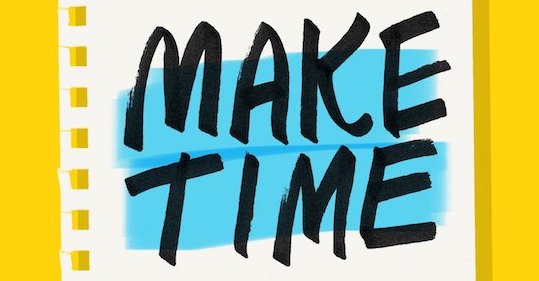
In 1826, John Stuart Mill had an existential crisis.
He fell into a deep depression and contemplated suicide for a year.
Mill was only 20 years old.
What made his existential malaise so perplexing was that since the day he’d been born, his entire life had been designed to generate the utmost happiness.
Mill’s father was a utilitarian. In fact, his father’s good friend, Jeremy Bentham, was the father of utilitarianism. Utilitarianism is a branch of ethics that aims to maximize the happiness and well-being of all individuals. “The greatest good for the greatest number of people” is a catchphrase commonly used to encapsulate the philosophy.
When John Stuart Mill was born, his father created a life plan for him based on the ideas of utilitarianism. The goal was to engineer the happiest child that would go on to increase the happiness of humanity.
John Stuart Mill was going to be a utilitarian ubermensch. Talk about parental pressure.
For a time, it seemed like Mill’s father would succeed with his project. John Stuart Mill was a child prodigy. By age eight, he was reading and writing in Latin and Greek, doing algebra, writing treatises on Plato, and composing poetry.
All the while, he was taught and encouraged to find ways to better not only himself, but the lot of humanity. Young John Stuart Mill aimed to reform institutions to bring more freedom and happiness to as many people as possible. He advocated for women’s suffrage, ending slavery and racism, and alleviating poverty. His entire identity was wrapped up in the idea of being a moral reformer.
In his autobiography, Mill described how his ambitious goal to make the world a better place animated his life:
My conception of my own happiness was entirely identified with this object. The personal sympathies I wished for were those of fellow laborers in this enterprise. I endeavored to pick up as many flowers as I could by the way; but as a serious and permanent personal satisfaction to rest upon, my whole reliance was placed on this; and I was accustomed to felicitate myself on the certainty of a happy life which I enjoyed, through placing my happiness in something durable and distant, in which some progress might be always making . . . This did very well for several years, during which the general improvement going on in the world and the idea of myself as engaged with others in struggling to promote it, seemed enough to fill up an interesting and animated existence.
But then, in 1826, Mill fell into his deep, deep funk.
It started gradually.
If you’ve ever been in a rut, you can likely identify with how Mill felt:
I was in a dull state of nerves, such as everybody is occasionally liable to; unsusceptible to enjoyment or pleasurable excitement; one of those moods when what is pleasure at other times, becomes insipid or indifferent.
What began as a general sense of listlessness turned into a full-blown existential crisis when Mill found himself thinking through a penetrating question:
Suppose that all your objects in life were realized; that all the changes in institutions and opinions which you are looking forward to, could be completely effected at this very instant: would this be a great joy and happiness to you?’ And an irrepressible self-consciousness distinctly answered, ‘No!’ At this my heart sank within me: the whole foundation on which my life was constructed fell down. All my happiness was to have been found in the continual pursuit of this end. The end had ceased to charm, and how could there ever again be any interest in the means? I seemed to have nothing left to live for.
Mill had supposed that if he accomplished his goals of advancing the social issues he believed in, he would find happiness. But he realized that even if he attained all his aims, he still wouldn’t be happy.
He was bumping up against one of life’s great paradoxes: the more you make happiness your primary goal, the less likely you are to achieve happiness.
This led to a fundamental and lasting change in Mill’s thinking:
I now thought that this end [happiness] was only to be attained by not making it the direct end. Those only are happy (I thought) who have their minds fixed on some object other than their own happiness . . . Aiming thus at something else, they find happiness by the way.
Once Mill realized making happiness his primary goal in life wouldn’t make him happy and could actually just be making him miserable, he found the key to unlocking his existential crisis.
Telic vs Atelic Goals
So what specifically got John Stuart Mill out of his funk?
Reading the poetry of William Wordsworth.
But here’s the thing: Mill didn’t pick up Wordsworth thinking, “If I read this guy, it will make me feel better.” There was no specific aim or intention behind it. He was reading based on what Emerson called Whim with a capital W. As Mill wrote:
I took up the collection of his poems from curiosity, with no expectation of mental relief from it, though I had before resorted to poetry with that hope. . . . I had looked into The Excursion two or three years before, and found little in it; and I should probably have found as little, had I read it at this time. But the miscellaneous poems . . . proved to be the precise thing for my mental wants at that particular juncture.
For the first time in John Stuart Mill’s young life, he was doing something not for the sake of the bigger goal of being happy.
And he discovered that made him happy.
In his book, Midlife, philosopher Kieran Setiya breaks down activities into two types: telic and atelic.
Telic comes from the Greek word telos, which denotes an ultimate object or aim. Telic activities have a goal in mind. They are means to some end.
You go to school so that you can get a job.
You get a job so that you can make money.
You make money so that you can buy a house.
You buy a house to raise a family.
You raise a family to be happy.
Telic activities are a necessary part of life. Without them, we wouldn’t have roofs over our heads or food in our bellies.
The problem with telic activities, according to Setiya, is that while they can direct and energize you, they have a completion point. Once you do the task, you extinguish the very thing motivating you and giving you meaning. To get that meaning back, you have to move on to the next task. And then the next. And the next.
That’s what John Stuart Mill realized when he fell into his deep funk and asked himself if he’d be happy if he achieved all of his reform goals; their completion might have made him happy for a moment . . . but then what?
Focusing exclusively on telic activities gets you stuck on an endless, existentially empty wheel.
Atelic activities are the opposite of telic activities. They don’t have an end in mind. They don’t have a finish line. You can never exhaust them. You can do them as much as you want, and you’re never done with them.
Walking (for the heck of it), socializing (simply for enjoyment), and reading (for pleasure alone) are examples of atelic activities. You don’t do them as a means towards getting something else; they’re done for their own sake.
For John Stuart Mill, reading the poetry of Wordsworth was his atelic activity. He noted that Wordsworth wasn’t considered one of the great poets, but it didn’t matter. Mill’s goal wasn’t to read what the critics thought were the great poets. He just enjoyed reading Wordsworth. Wordsworth spoke to him:
What made Wordsworth’s poems a medicine for my state of mind, was that they expressed, not mere outward beauty, but states of feeling, and of thought coloured by feeling, under the excitement of beauty. They seemed to be the very culture of the feelings, which I was in quest of. In them I seemed to draw from a source of inward joy, of sympathetic and imaginative pleasure, which could be shared in by all human beings; which had no connection with struggle or imperfection, but would be made richer by every improvement in the physical or social condition of mankind. From them I seemed to learn what would be the perennial sources of happiness, when all the greater evils of life shall have been removed. And I felt myself at once better and happier as I came under their influence. The result was that I gradually, but completely, emerged from my habitual depression.
To Get Out of Your Existential Funk, Add More Atelic Activities to Your Life
In our podcast interview with Setiya, he argues that one of the reasons people fall into a midlife slump is that they just get tired of constantly engaging in telic activities. The entire life of a modern adult can consist of nothing but an endless to-do list of telic activities to be checked off: do the report, pay the bills, buy the food, go to the meeting, fix the car, etc.
One of the things Setiya recommends to help you get out of a slump is to start injecting your life with more atelic activities. Take up a hobby, spend more time with your kids, listen to music, go for a hike. Do things without any utilitarian purpose in mind.
You’ve got to be careful with this, though. There’s a very American tendency to turn atelic activities into telic activities.
People meditate to be more productive; socialize to increase the size of their network; read to become better leaders; start hobbies to create money-making side hustles; hike to reach the highest point in every state . . . and then be able to post on social media about how they reached the highest point in every state.
Just do the thing because you want to do the thing.
You don’t need to attach a telic reason to justify your atelic joys.
Permission to do useless things granted.
Also, John Stuart Mill’s life can be a warning about what could happen if you tie up your happiness with being a do-gooder. Don’t expect serving others and giving yourself to causes to lend your life significance, offer an identity, and make you happy. It could do all those things, but only as an indirect side effect. Yes, do good, but do good simply because it’s good.
Besides adding more atelic activities to your life, Setiya also recommends looking for the atelic in your telic activities.
For example, if you coach little league baseball, don’t just focus on the immediate and concrete outcome of winning games. That’s a telic activity. Winning games is a fine goal to have. But there’s also an atelic activity going on when you’re coaching. You’re learning how to teach and improve the young men in your charge. Become a John Wooden who’s engaged in ever refining your mentorship.
Richard Rohr describes the atelic that lies within the telic as “the task within the task,” and observes that cultivating a meaningful life requires discovering “what we are really doing when we are doing what we are doing.”
It’s a lifelong, atelic process.
And beginning it might be just the thing to get you out of your funk.







